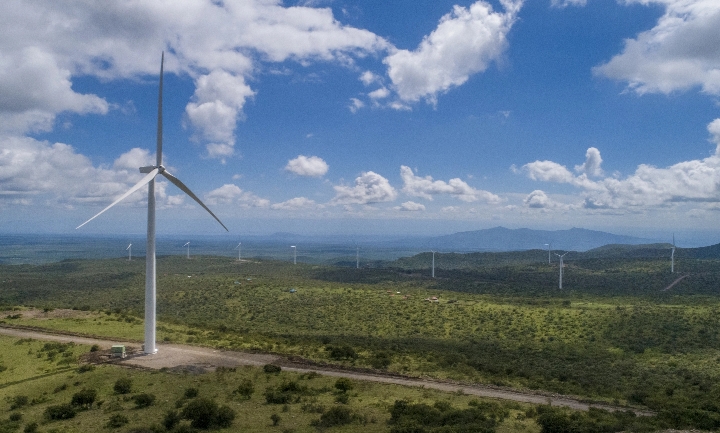The Turning Point for rates may be too late for some
Since the global nadir for interest rates in mid-2021, Central Banks have been reining in inflation and countering the effects of enormous monetary stimulus. As an example, the Federal Reserve balance sheet has dropped by over $1.2 trillion from peak, US money supply growth is now negative, and rates have climbed from zero to 5.25%. With the notable exception of the Bank of Japan, the other main central banks followed suit. And even in Tokyo, policy adjustment to higher, but not high, rates is now underway.
More recently the tide has begun to slow. Forward rate expectations have shifted to a downward trajectory over the next 12-24 months, at least in nominal terms. Central banks are now fighting a rearguard action to justify today’s rates, a sea change from trying to get ahead of rising inflation.

Assets and investment styles which most benefitted from low rates and easily available leverage are now challenged. The wall of rollovers for commercial property, buyout capital and early-stage venture capital have only just begun to expunge equity in these areas. The IMF estimates that $15 trillion of private sector debt rolls over in 2024/5, all at materially much higher rates. Underlying corporate cash flows remain strong, judging by public company announcements, but debt loads and transaction famines bite deep into returns. 35-45% discounts for private equity funds listed on the London Stock Exchange and the 10-15% discount for buyout secondaries suggests pain to come, albeit not so severe as six months ago when they were at 80.



Who will cut, who will hike in 2024?
Exhibit 1 Rate cuts and rate rises in 2024 (%)
Candidates for rate cuts 2024
Source data: Bloomberg LP. As of 31 December 2023
Candidates for rate rises 2024
Source data: Bloomberg LP. As of 31 December 2023
Duration sensation
A combination of rising deficits and Central Banks moving from buyer to seller as inflation is reined in mean that US Treasury bonds suffered their third year of losses in 2023, the longest losing streak since 1928. The traditional 60-40 model that underpins strategic allocation models for longer term investors has come under scrutiny. We suspect that losses in 2024, if they emerged, would pose an even greater challenge since short term rates will be falling. While much analysis has focused on the US, a far greater risk exists in Europe where there is no fiscal anchor and recessionary conditions eat into revenue collection.



Why does this matter for real assets?
The rubber hits the road in four ways:
- Portfolio losses and low realisations affect appetite for risky assets in leveraged wrappers
- If duration equals losses, the search for cash flow matching strategies without endless supply headaches leads straight to infrastructure.
- As governments struggle to make ends meet fiscal support available to back up private sector capital wanes. Well-funded projects with long duration cash flows will attract plenty of attention.
- Lastly an era of higher rates rewards higher IRR strategies. The 2022 G20 Infrastructure Monitor reports historic returns in developed markets in the low teens and with low volatility. An IRR of 12.5% net held for 5 years is a MOIC of 1.8x comfortably above the 1.5x commonly assumed for listed equities thus compensating for illiquidity risk.
And it is not as if real assets are expensive to judge from this chart, courtesy of Bank of America. (There are of course two sides to this as the main driver is the extraordinary performance of NASDAQ over the last 15 years).
Long Real Assets, short Financial Assets
Real Assets relative to Financial Assets since 1925
Source: BofA Global Investment Strategy, Global Financial Data, Bloomberg, USDA, Savills, Shiller, ONS, Spaenjers, Historic Auto Group. Note: Real Assets (Commodities, Real Estate, Collectibles) vs. Financial Assets (Large Cap Stocks, Long-term Govt. Bonds)
Reprinted by permission. Copyright © 2024 Bank of America Corporation (“BAC”). The use of the above in no way implies that BAC or any of its affiliates endorses the views or interpretation or the use of such information or acts as any endorsement of the use of such information. The information is provided “as is” and none of BAC or any of its affiliates warrants the accuracy or completeness of the information.
Politics to the fore
Major elections come thick and fast in 2024. Some – the US for instance – have the potential to change long term outlooks. Others, India for instance, are expected to underpin policy continuity. Commentators will swarm over the various events.
We do not make predictions as to outcomes, but the stakes in 2024 and beyond have clear potential to raise longer term risk potential, which in itself, is already unusually high. The Middle East, Ukraine and the South China Sea remain potential flash points.
- Select a country from the list below or hover the marked countries to see more.
Source: Copyright © 2023 by S&P Global Market Intelligence, a division of S&P Global Inc. All rights reserved. Reprinted by permission. As of 20 November 2023.
Some Surprises
1) China exceeds current pessimistic growth expectations. In the recent months the People’s Bank of China (“PBOC”) has injected over 7 trillion RMB into domestic money markets. The visit in late 2023 by President Xi to the PBOC has been compared in some circles to Deng Xiaoping’s famous trip to Shenzhen in 1992 which kick started the 30-year private sector wealth boom. Even if this is an exaggeration the point is clear – Chinese policy is now addressing the balance sheet recession brought on by the collapse of Evergrande. This doesn’t need to be dramatic to add to the global economy – a 3% growth rate to the end of the decade adds another India to the world.
2) This push deflates the RMB and further pulls down the North Asian currencies which have tracked the RMB/USD cross rate. In passing this probably involves holding fewer Treasuries than in the past. Notable too that for other reasons the Saudi Arabian Monetary Authority and other GCC sovereign wealth funds are increasing their emphasis on investing at home and thus reducing their recycling of surpluses into lower risk assets.
3) Protectionist policies such as the Inflation Reduction Act boost demand for green energy in the US and further enhance the exposure of South American economies to the American economy. Mexico, for instance, has surpassed China as the largest exporter to the US.
4) The US escapes a recession. In so doing Latam currencies catch a bid because of high real rates and diminished currency volatility. This is a lower conviction view than a year ago in particular because labour market dynamics, whilst positive, are losing some steam.
5) Commodities, in particular those backing energy transition, continue to be a focus for strategic acquisition.
6) The drought of private assets fundraising begins to recede. Peaking nominal rates and thus unfavourable discounting mechanisms for illiquid assets could help. Equally the realisation that eight mega cap tech stocks apart the US equity market made no money in 2023 may drive more diversification. In this respect, return levels and their concentration matter a lot to strategic asset allocators. The author can attest to this from his long experience in this arena.
